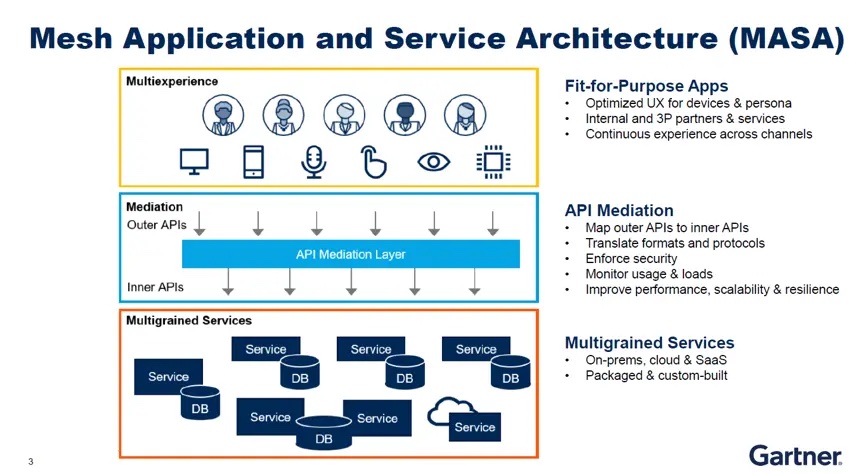Masa Architecture

What is it?
MASA stands for Mesh App and Service Architecture. It is a new architectural model that was introduced by Gartner in 2016. MASA is designed to address the challenges of modern application development, such as the need for agility, flexibility, and scalability.
In a MASA architecture, applications are made up of a mesh of independent and autonomous services. These services are connected to each other through APIs. This allows applications to be easily composed and decomposed, making them more agile and flexible.
MASA architectures are also more scalable than traditional architectures. This is because services can be scaled independently of each other. This allows applications to handle increased traffic without having to scale the entire application.
One successful use case for MASA architecture is the Netflix application. Netflix is a streaming service that offers a wide variety of movies and TV shows. The Netflix application is made up of a mesh of independent services. These services are responsible for different tasks, such as streaming video, storing data, and generating recommendations.
The MASA architecture allows Netflix to be agile and flexible. For example, Netflix can easily add new features to the application without having to make major changes to the underlying architecture. This has allowed Netflix to quickly adapt to the changing needs of its customers.
MASA architecture is a new and innovative approach to application development. It offers a number of advantages over traditional architectures, such as agility, flexibility, and scalability. MASA architectures are well-suited for modern applications that need to be able to adapt to change quickly.
Benefits of MASA architecture:
Improved security: MASA architectures can be more secure than traditional architectures because services can be isolated from each other. This makes it more difficult for attackers to exploit vulnerabilities in one service to attack other services.
Reduced costs: MASA architectures can help to reduce costs by making it easier to scale applications. This is because services can be scaled independently of each other.
Improved performance: MASA architectures can improve performance by making it easier to distribute traffic across multiple services. This can help to improve response times and reduce latency.
So, If you are looking for a new architectural model for your next application, MASA architecture is a great option to consider. It offers a number of advantages that can help you to build more agile, flexible, and secure applications.
